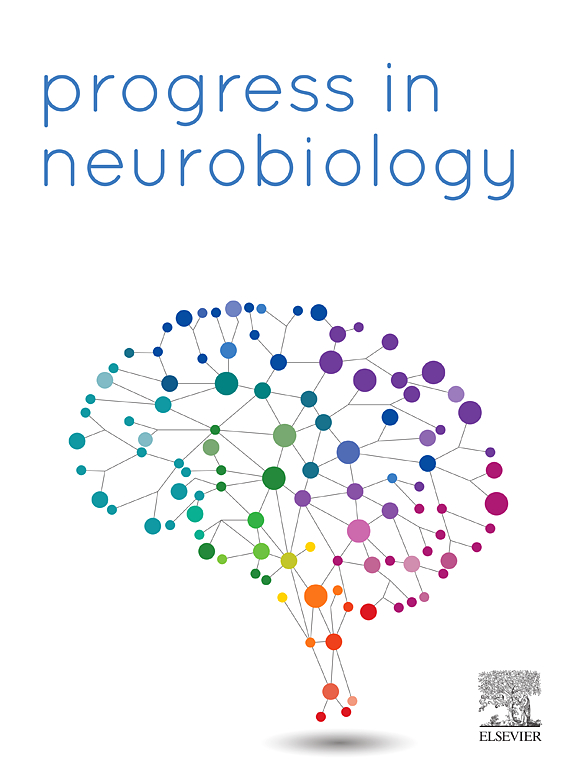Decoding stress granules dynamics: Implications for neurodegenerative disease
IF 6.1
2区 医学
Q1 NEUROSCIENCES
引用次数: 0
Abstract
Stress granules (SGs) are membrane-less cytoplasmic structures formed by cells in response to external stress, primarily composed of mRNA and proteins. The dynamic properties of their assembly, maintenance, and disassembly play crucial roles in cellular homeostasis. Recent studies have increasingly revealed that aberrations in SGs dynamics are closely related to the pathogenesis of various neurodegenerative diseases, including Alzheimer's disease, Parkinson's disease, and amyotrophic lateral sclerosis. This review summarizes the latest research progress on SGs dynamics in neurodegenerative diseases. It begins with an overview of the basic biological characteristics of SGs and their functions in neurons, followed by an in-depth exploration of the mechanisms and regulatory pathways of SGs dynamics. The review then summarizes potential therapeutic strategies targeting SGs dynamics abnormalities, particularly through small molecule drugs to modulate SGs formation and disassembly, aiming to delay or halt the progression of neurodegenerative diseases. The review also highlights the application prospects of these interventions in treating neurodegenerative diseases. Finally, the review introduces current techniques used to study SGs dynamics, discussing their advantages, limitations, and future development possibilities. This review aims to provide researchers with a comprehensive perspective to advance the understanding and clinical application of SGs dynamics in the field of neurodegenerative diseases.
解码压力颗粒动力学:对神经退行性疾病的影响。
应激颗粒(Stress granules, SGs)是细胞对外界应激反应形成的无膜细胞质结构,主要由mRNA和蛋白质组成。它们的组装、维持和拆卸的动态特性在细胞内稳态中起着至关重要的作用。近年来越来越多的研究表明,SGs动力学异常与各种神经退行性疾病的发病机制密切相关,包括阿尔茨海默病、帕金森病和肌萎缩侧索硬化症。本文综述了神经退行性疾病中SGs动力学的最新研究进展。首先概述了SGs的基本生物学特性及其在神经元中的功能,然后深入探讨了SGs动力学的机制和调控途径。然后总结了针对SGs动力学异常的潜在治疗策略,特别是通过小分子药物来调节SGs的形成和分解,旨在延缓或阻止神经退行性疾病的进展。综述还强调了这些干预措施在治疗神经退行性疾病中的应用前景。最后,介绍了目前用于研究SGs动力学的技术,讨论了它们的优点、局限性和未来的发展可能性。本文旨在为神经退行性疾病领域的研究人员提供一个全面的视角,以促进对SGs动力学的认识和临床应用。
本文章由计算机程序翻译,如有差异,请以英文原文为准。
求助全文
约1分钟内获得全文
求助全文
来源期刊

Progress in Neurobiology
医学-神经科学
CiteScore
12.80
自引率
1.50%
发文量
107
审稿时长
33 days
期刊介绍:
Progress in Neurobiology is an international journal that publishes groundbreaking original research, comprehensive review articles and opinion pieces written by leading researchers. The journal welcomes contributions from the broad field of neuroscience that apply neurophysiological, biochemical, pharmacological, molecular biological, anatomical, computational and behavioral analyses to problems of molecular, cellular, developmental, systems, and clinical neuroscience.
 求助内容:
求助内容: 应助结果提醒方式:
应助结果提醒方式:


